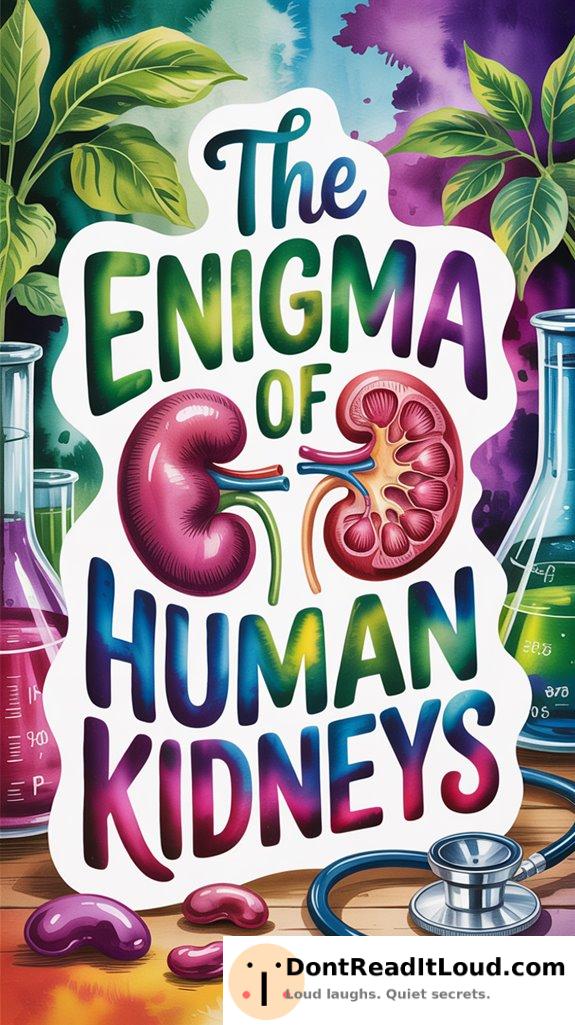
Your kidneys are remarkable, tirelessly filtering your blood to maintain your body’s balance and overall health. Nestled just below your ribcage, each kidney contains over a million nephrons—tiny but vital filtration units. These structures efficiently remove waste while conserving important nutrients. If their function declines, kidney disorders may develop, yet ongoing research offers hope for new treatments. Much remains to be discovered about these extraordinary organs.
Anatomy and Structure of the Kidneys
Although often overlooked, the kidneys are marvels of biological engineering. Think of them as your body’s personal bean-shaped bouncers, keeping everything in balance.
Nestled just below your ribcage, these organs contain over a million tiny units called nephrons. Each nephron acts like a microscopic assembly line, working nonstop to keep you healthy.
The renal cortex, the kidney’s outer layer, is where much of this crucial work begins. It’s like a busy office running efficiently behind the scenes.
Next time you think about your kidneys, remember to appreciate their nonstop dedication.
The Intricate Process of Blood Filtration
Having marveled at the complex architecture of the kidneys, let’s explore how they perform their essential task of filtering blood.
Picture your kidneys as a couple of tiny, overachieving superheroes, tirelessly working to keep you healthy. They’re packed with millions of nephrons, those microscopic filtration units that leap into action with impressive precision, ensuring your blood is thoroughly cleansed.
These filtration experts remove toxins and excess substances, while holding onto what your body needs, much like a bouncer admitting only VIPs. It’s a purification process, and your kidneys are the dedicated hosts.
Understanding Kidney Disorders and Diseases
When your kidneys aren’t working properly, it’s important to understand the possible disorders and diseases. Think of your kidneys as the body’s filters, removing waste and keeping everything in balance. But if they stop doing their job, problems can develop quickly. That’s when kidney disorders come into play, and you might need to explore different dialysis options.
Dialysis comes in two main types: hemodialysis and peritoneal dialysis, each with its own benefits. If your kidneys fail completely, a transplant might be the next step, offering a fresh start. It’s like upgrading from a basic phone to the latest model.
Finding humor in the challenges of kidney disease can make the journey a bit easier.
Advances in Kidney Research and Treatment
Thanks to cutting-edge research and technological breakthroughs, the future of kidney treatment looks promising. Imagine a time when kidney transplants become a thing of the past.
With advances in regenerative medicine and stem cell therapy, scientists are close to growing kidneys in the lab. These remarkable cells could repair damaged tissue or even generate entirely new kidneys—no patching needed.
Conclusion
You’ve now explored the fascinating world of human kidneys, learning about their complex anatomy and vital role in blood filtration. By understanding common kidney disorders, you’re better prepared to recognize early signs and seek timely care. With advances in research and treatments, options for managing and recovering from kidney issues continue to improve. Taking care of your kidneys is crucial for your overall health, so make their well-being a priority. Stay informed and take proactive steps to support healthy kidneys.



